About Us
Our History
Our History
◾ Prelude
The task of creating the museum from scratch has been an exciting and rewarding experience, although not without its difficulties and setbacks. One of the difficulties, at times, has been the lack of understanding of the project, which at times has been seen as a personal initiative, -which it has been-, forgetting the institutional aspects of contribution to cultural dissemination, and promotional both from the University and the School.
Since its creation, the project has always been alive, carrying out an incremental improvement every year, even if it was very modest, helping to show the great importance that computing has in our lives and how it has changed our daily routines.
◾ 1997- Origin
The history of the creation of the Historical Museum of Informatics of the Polytechnic University of Madrid (mhi) dates back to the 3rd cultural week carried out by the students of the center in 1997, known as SICFIMA (Week of Research and Culture of the Faculty of Informatics of Madrid). In which an exhibition was held with pieces of historical value, owned by the different Departments of the Faculty, coming from donations, deposits from individuals and from different companies. And as a result of the interest shown by visitors, the idea of making a permanent museum-like exhibition began to be modeled.
◾ 1998-2001 - The beginnings
The museum’s work team is formed, made up of professors Victoria Rodellar Biarge, Marina Álvarez Alonso and students Guillermo Echevarría Villalba and María Diez Pesquera. The main efforts in these years focused on finding a physical space where to locate the warehouse and the permanent exhibition, as well as trying to obtain financing to develop the project.
In 2001, in a space of 68 m2, the first exhibition was held with which it participated in the First Science Week of the Community of Madrid and in the commemorative events of the 25th anniversary of the creation of the Faculty of Computer Science of the University Polytechnic of Madrid.
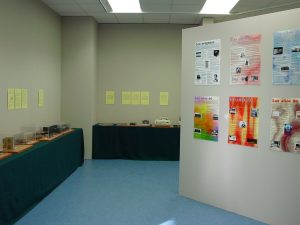
The compensation received for our participation in the successive editions of the Science Week, would become our main source of funding over the following years, enabling the improvement, expansion and maintenance of the exhibition hall, as well as the warehouse. , necessary to house the museum’s unexposed collections
◾ 2002-2004 - The opening
Between the years 2002 to 2004, showcases were built to house the objects and the exhibition form was notably improved, adequately lighting the objects and including a set of graphic panels and signage that developed, in a didactic way, an integrated discourse on the evolution of the computing and communications, highlighting the most important milestones and showing the timeline.
The museum was officially inaugurated on November 26, 2004, with Mr. Javier Uceda Antolín being Rector of the university and Mr. Javier Segovia Pérez dean of the Faculty, and since then until today, many visits have been received from students of the ESO, baccalaureate and training cycles, most of them coming from the Community of Madrid, although we have also occasionally received visits from other Autonomous Communities. and from countries around us
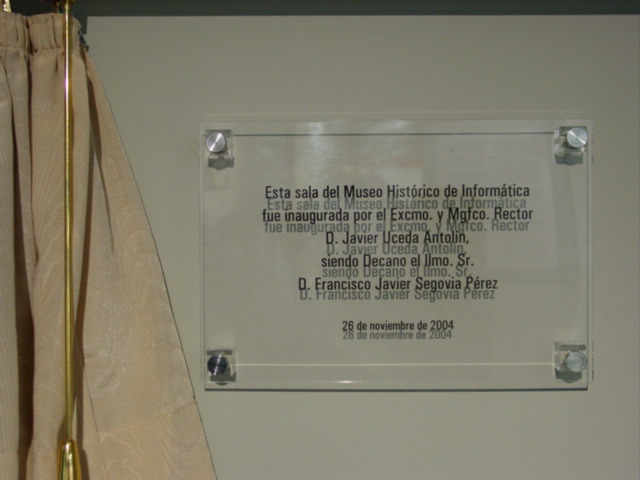
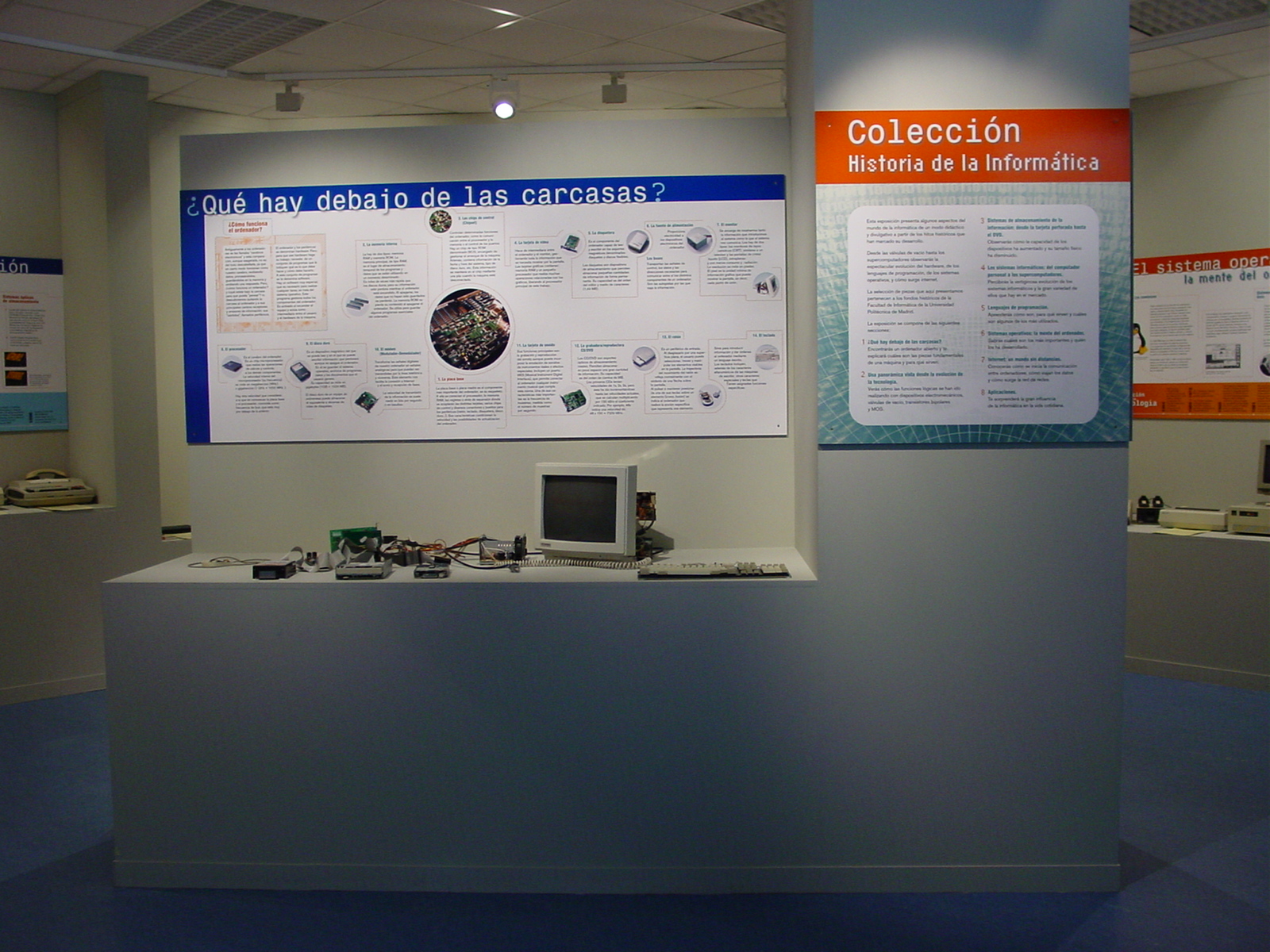
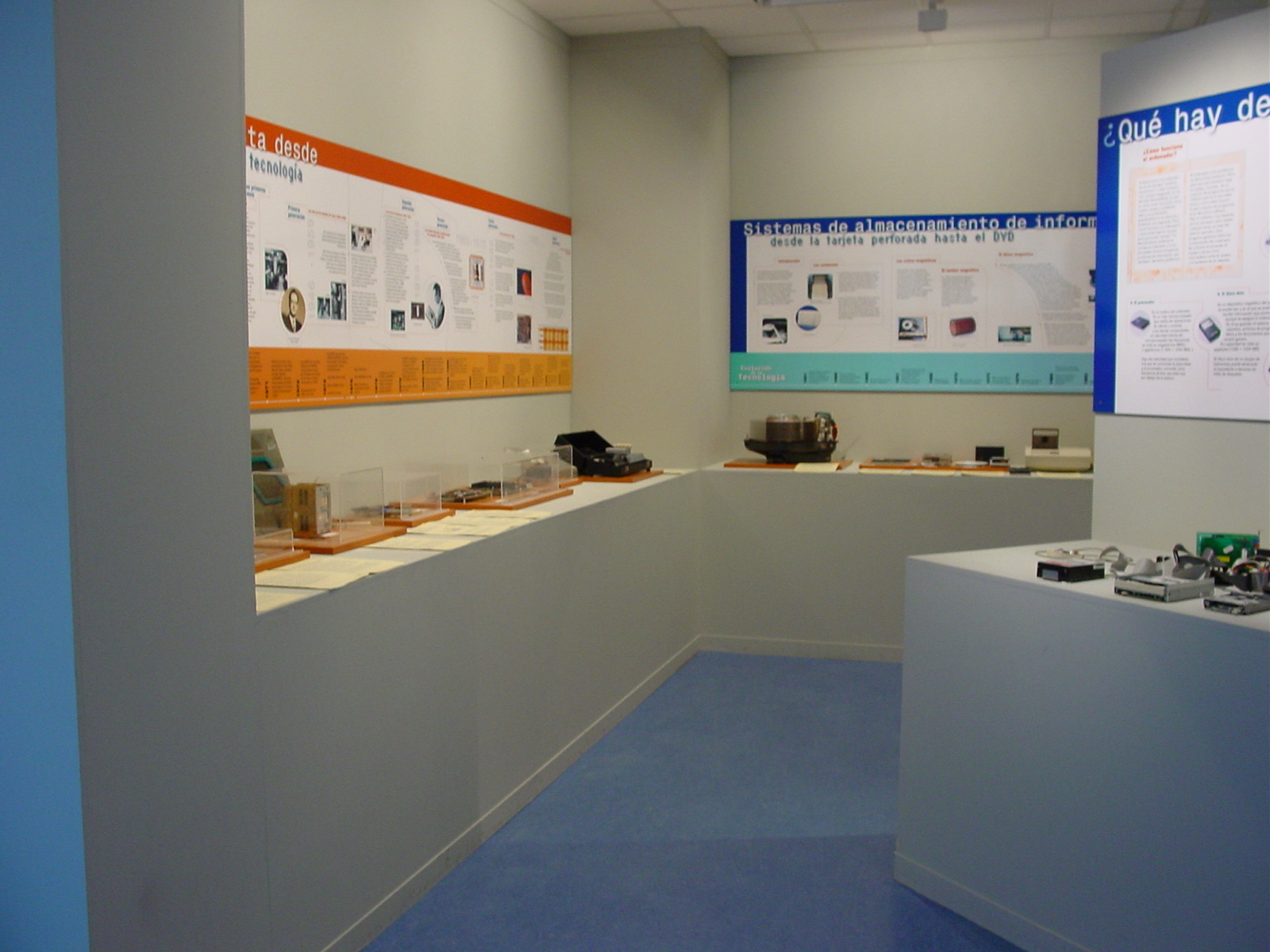
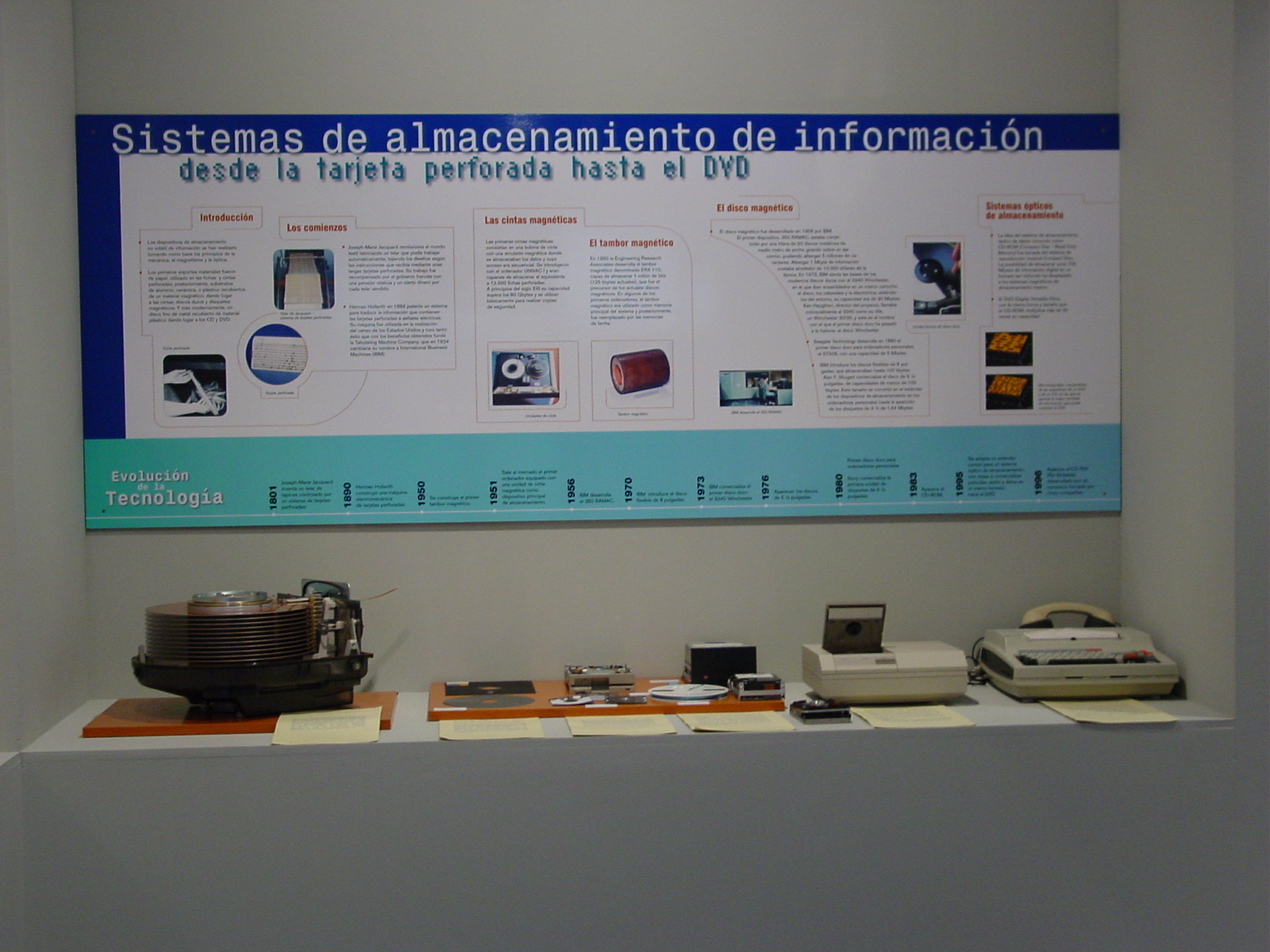
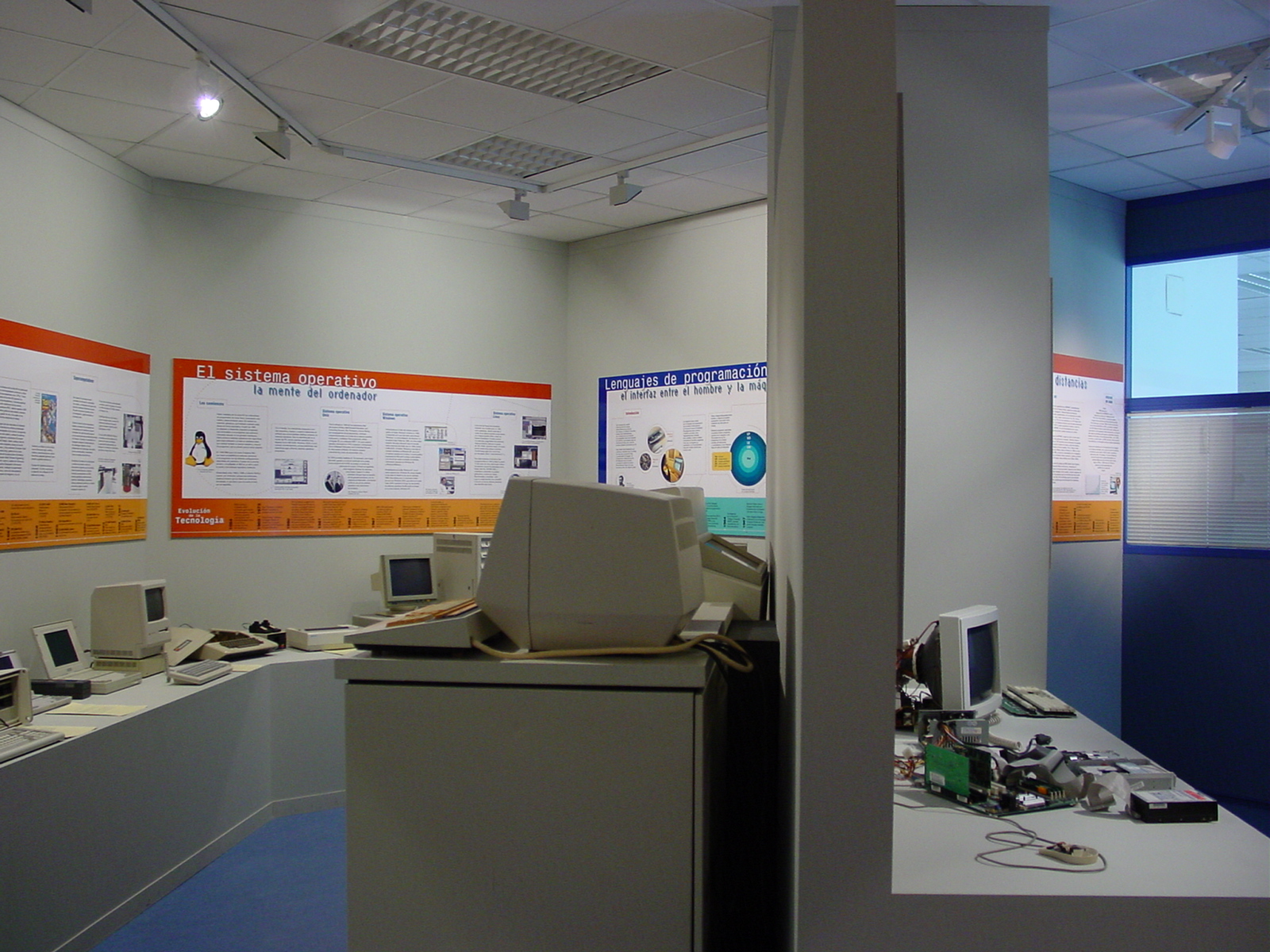
◾ 2005-2007 - Exhibition of monitors and mice
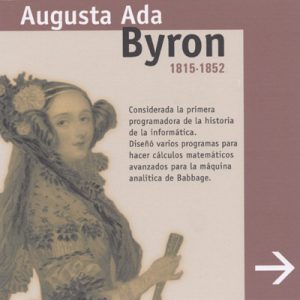
During those years, details of the exhibition and inventory are improved. The museum participates in the successive weeks of CAM Science.
The first virtual version of the museum was held in 2005. This version tries to be an enlarged copy of the face-to-face version, containing the same number of sections, a timeline of the different technological generations, biographies of the characters who have contributed to history and other information that may be of interest.
In 2006, the museum team carried out the work of naming the classrooms with historical figures related to computer science. The choice of characters was made by voting between teachers and students, the most voted were John Von Neumann and Alan Turing.
In 2007, the museum was expanded by 20 m2, and an exhibition was held, in which the evolution of mice and the performance of monitors were shown in a didactic way. And likewise, there is the problem of computer garbage that is generated in developed countries, and the treatment that is given to it.
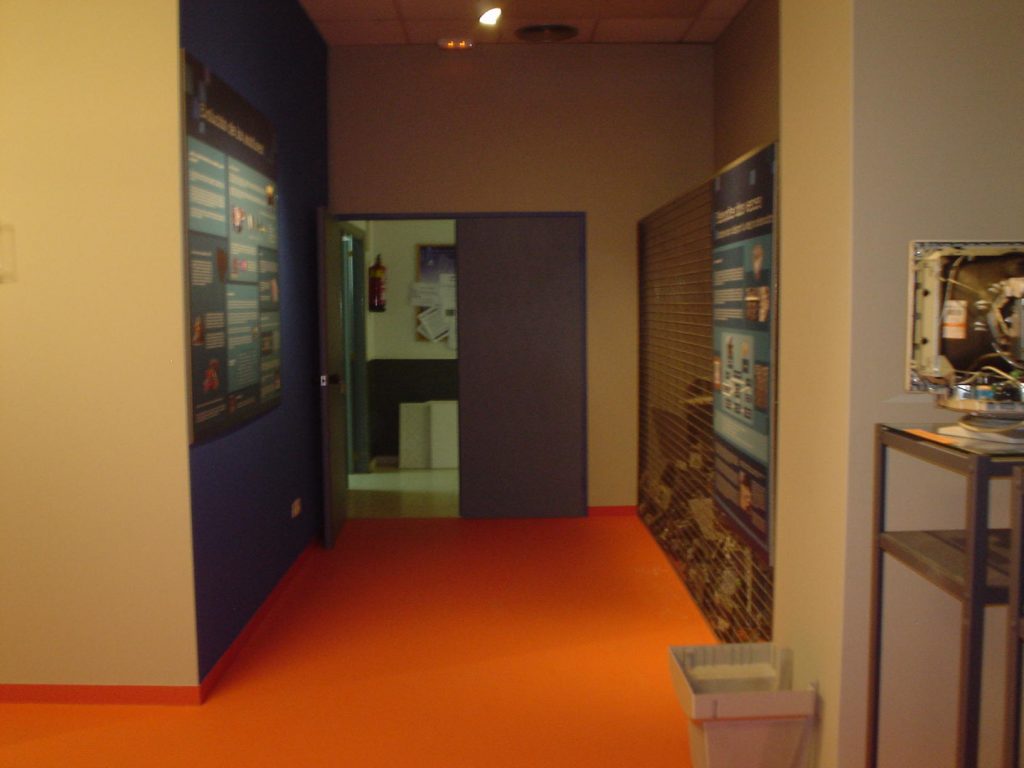
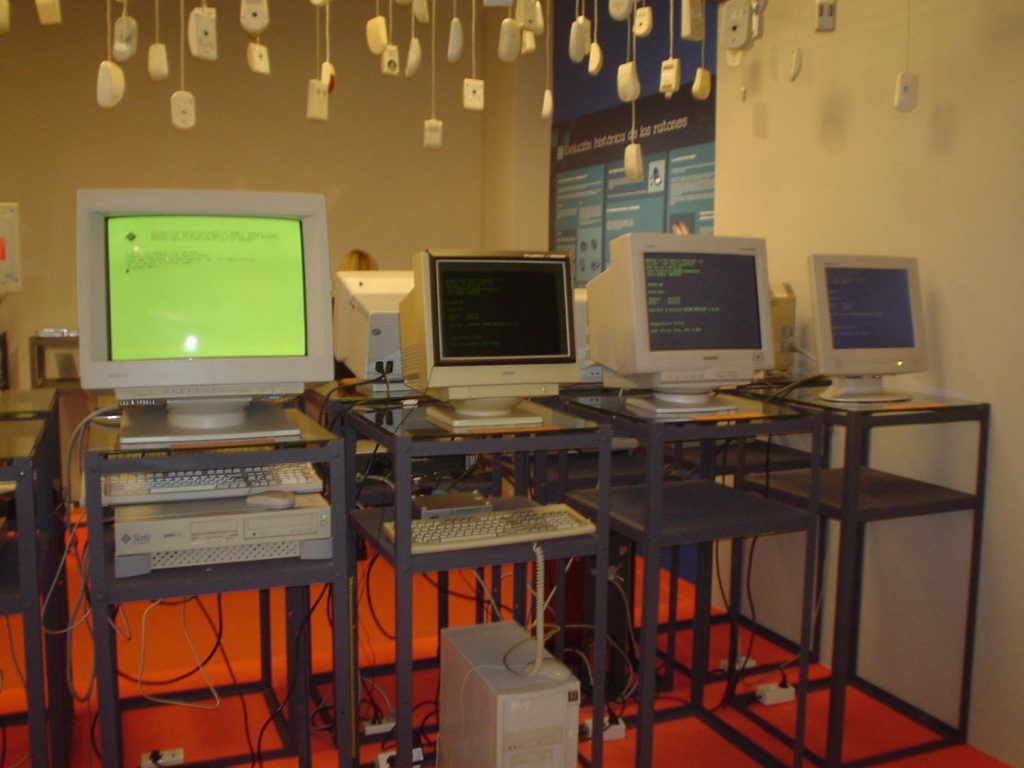
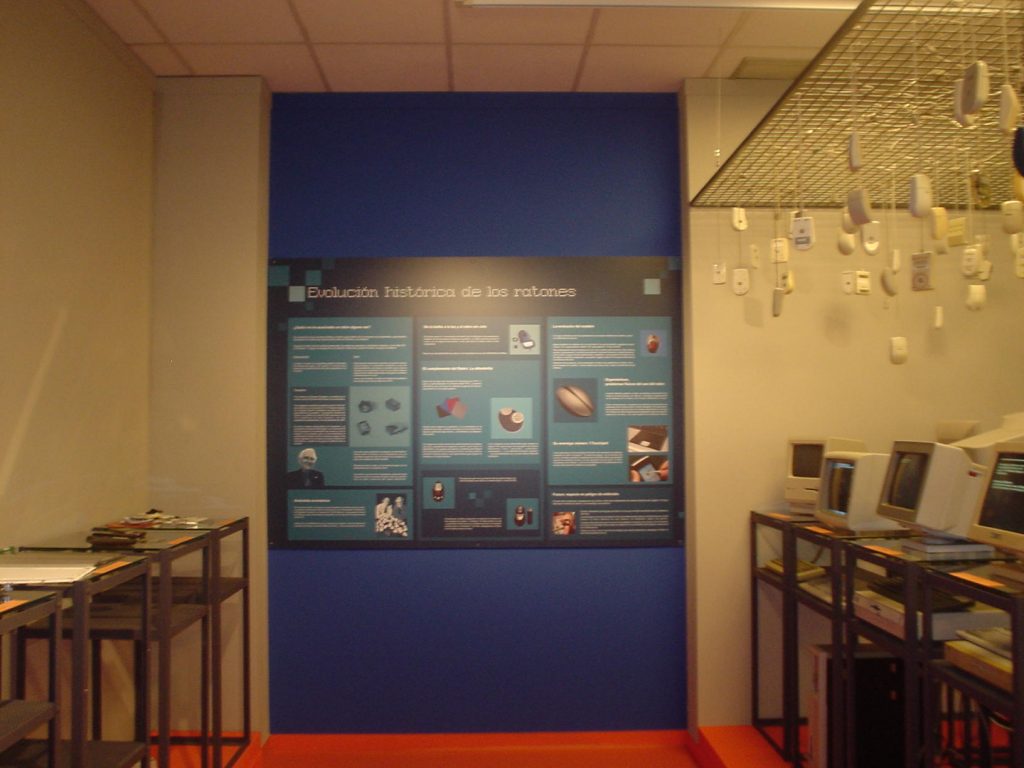
◾ 2008-2012 - Exhibition of workstations and large systems
During this period of time, the collection of objects was increased, and a new headquarters of 54 m2 was created, which was dedicated to the exhibition of medium-type machines, and large systems.
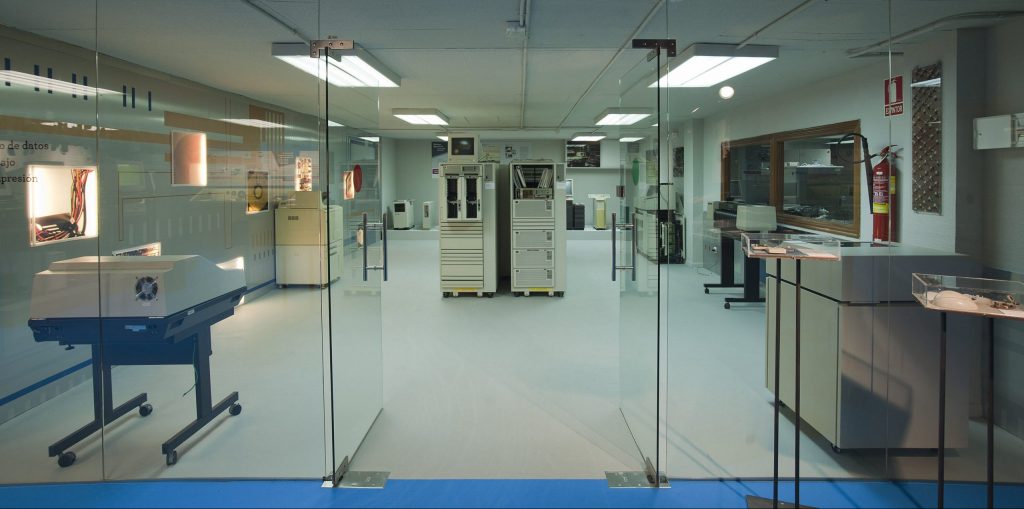
◾ 2013- 2016 - Unification and improvement of the exhibition space
In November 2013, the initial headquarters was moved, unified with the new headquarters mentioned above, all this was expanded with a new section for printing devices, and the entire prison was rebuilt, updating the contents with the advances of the last 10 years. The current available space is 262 m2.
The virtual version, I updated in 2013, also allowing the visit to be carried out in English, it also contains a summary of the contents in German, includes a form to request guided tours and another to make donations, and some other improvements.
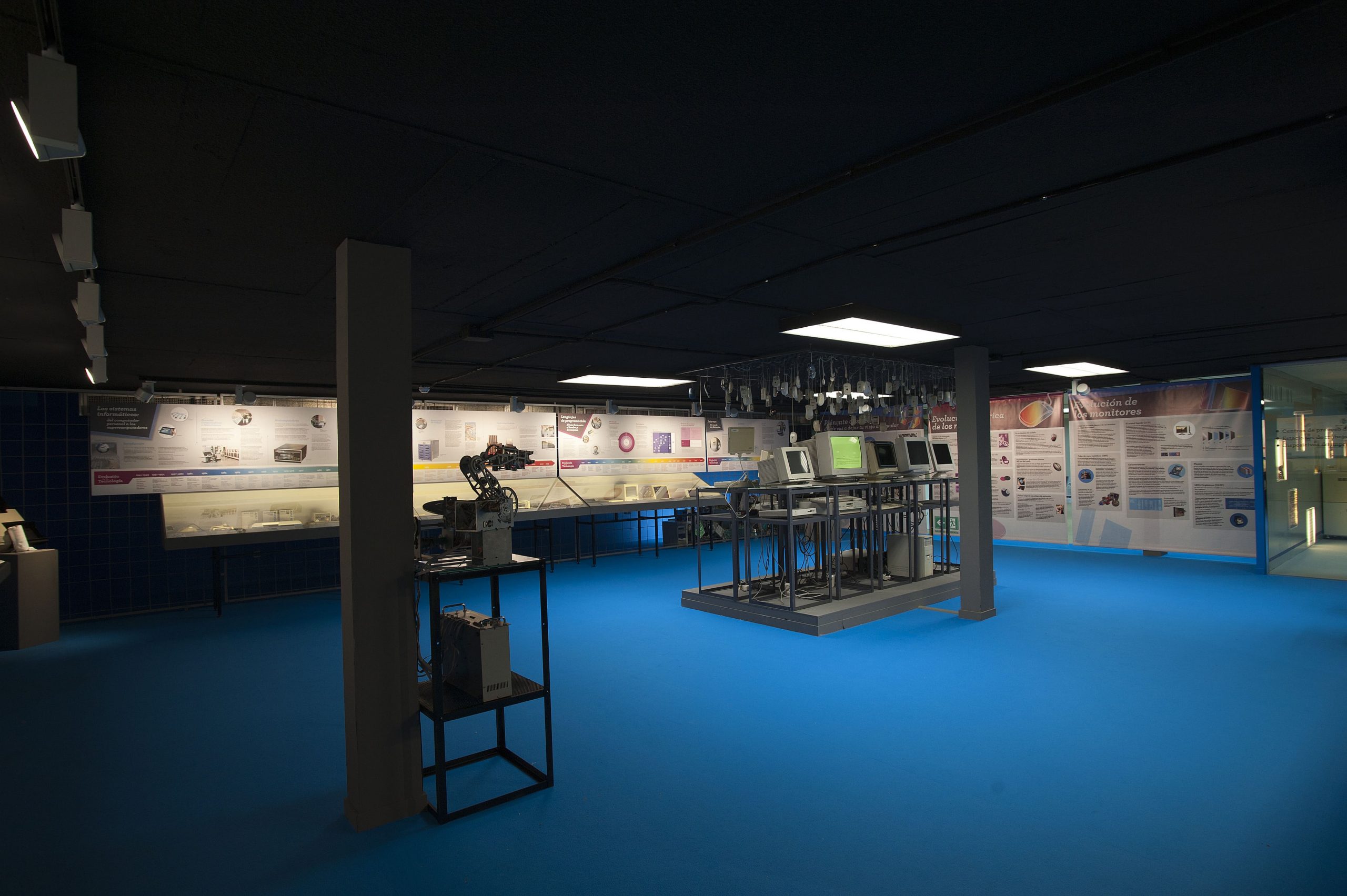
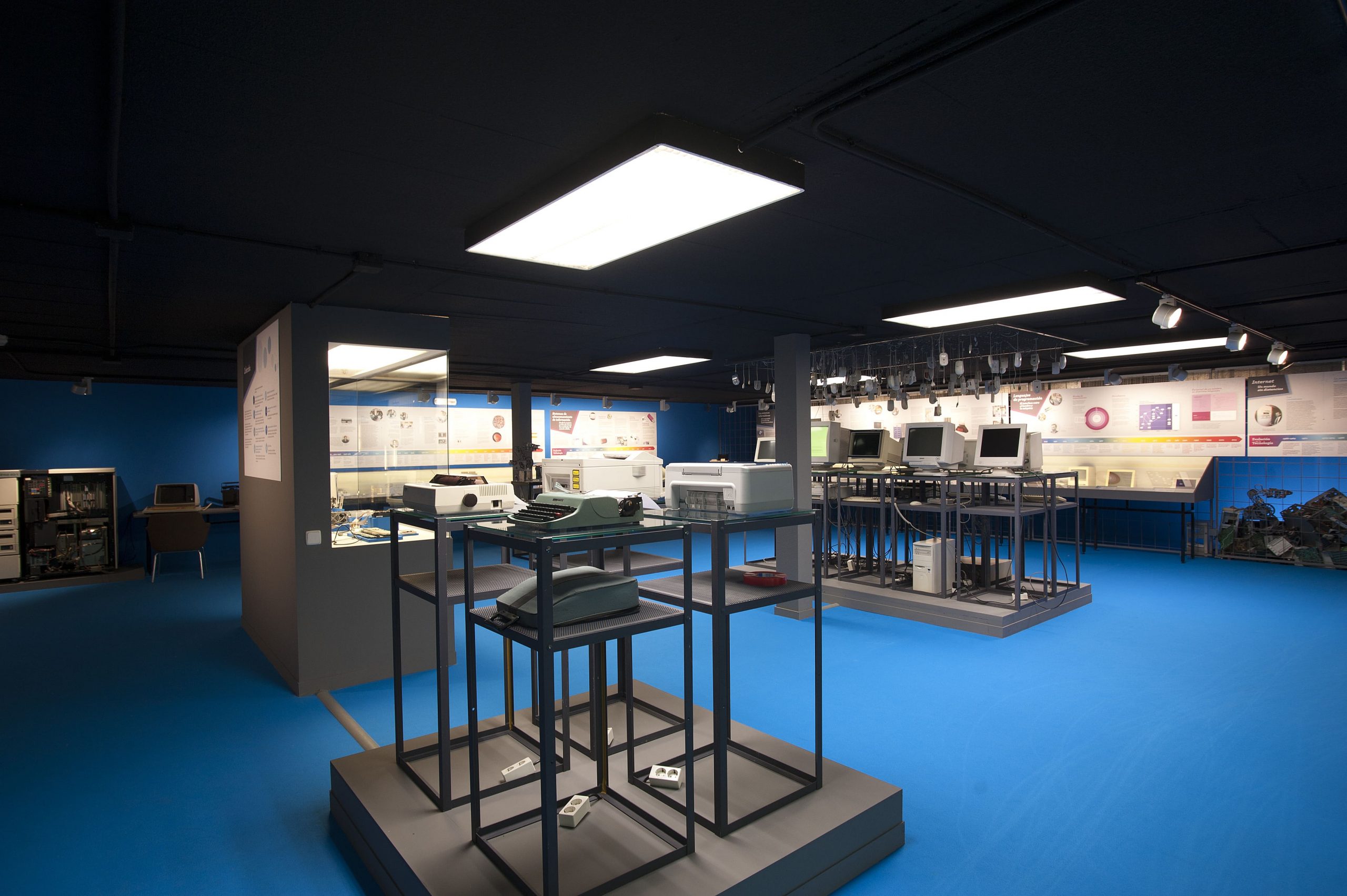
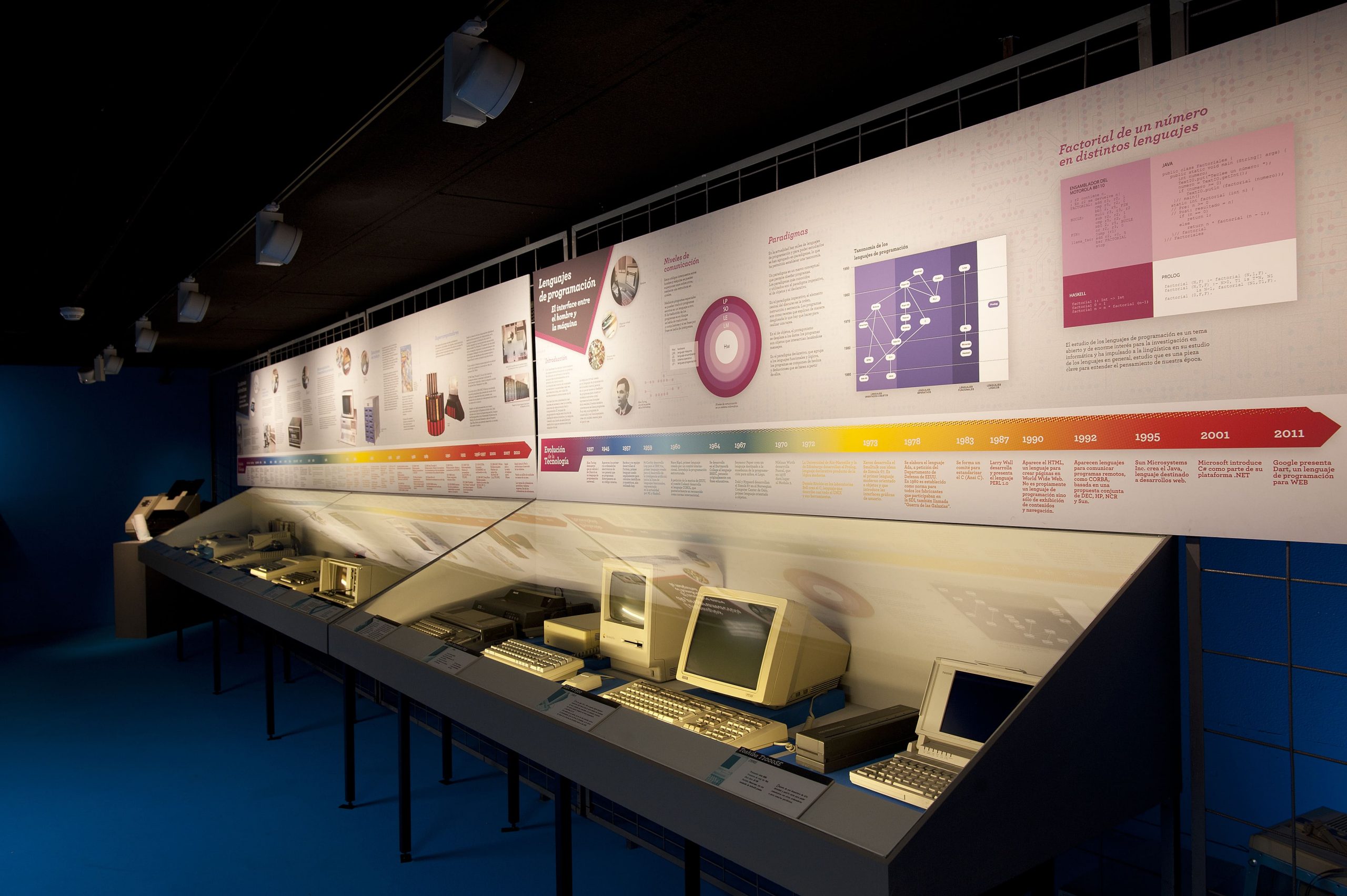
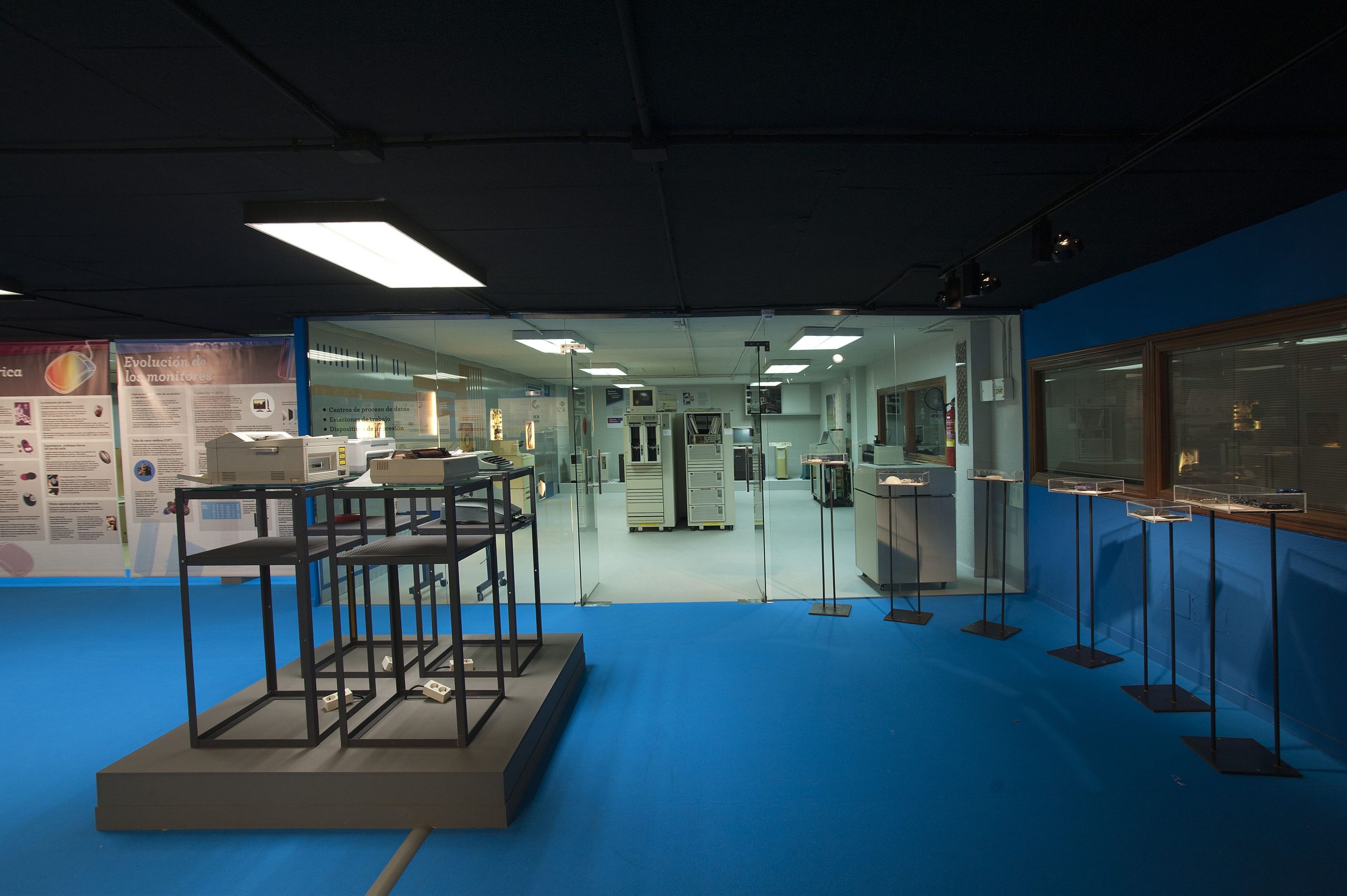
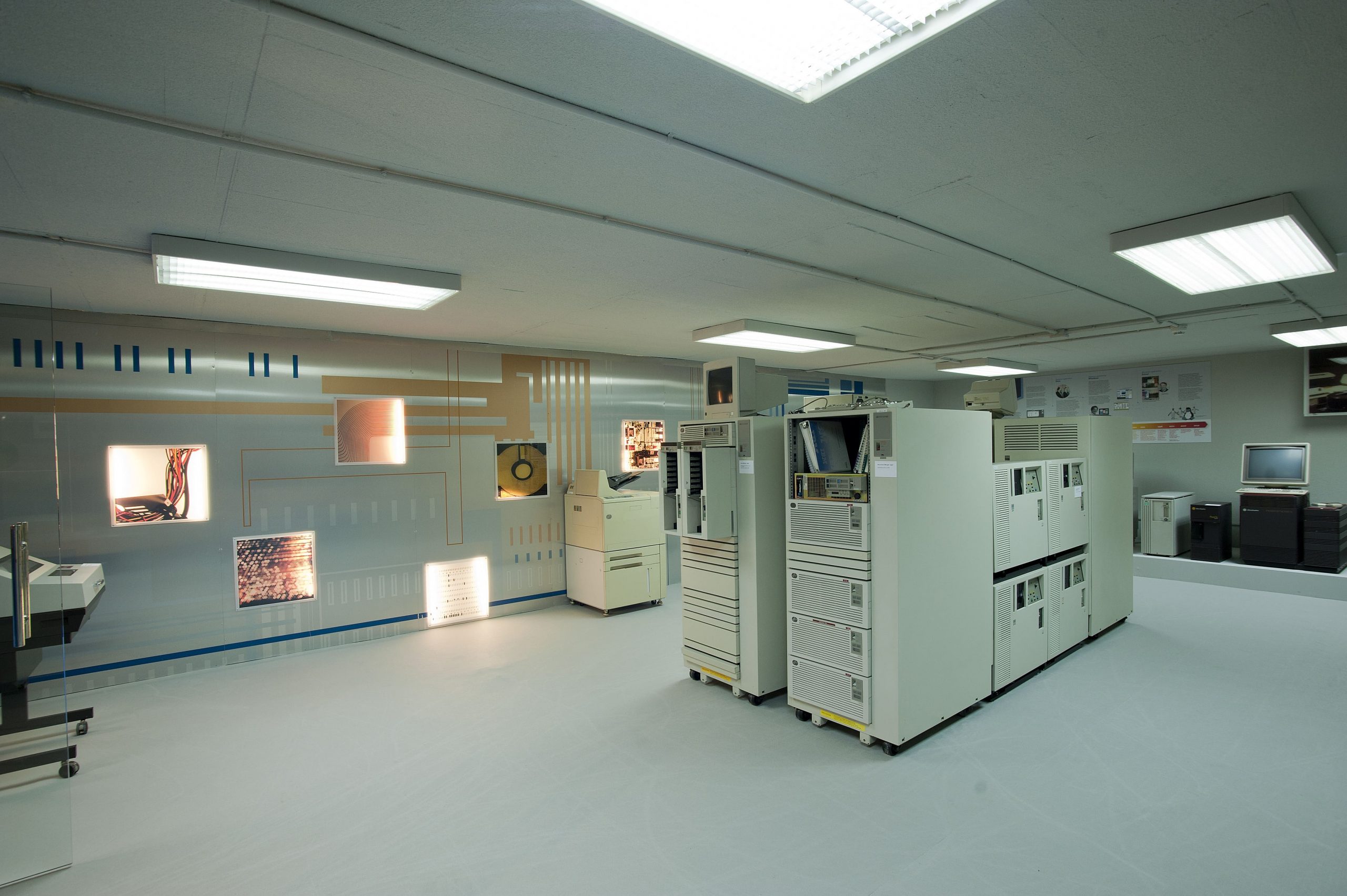
◾ 2017 - Inauguration of the exhibition of the Spanish video game: La abadía del crimen.
On November 17, 2017, in the assembly hall of the Higher Technical School of Computer Engineers, the presentation of the seal and the commemorative exhibition of the 30th Anniversary of the video game Abadía del Crimen took place. The event was organized by the Historical Museum of Informatics, the Postal Philately Directorate and the Association of Users of Classical Informatics.
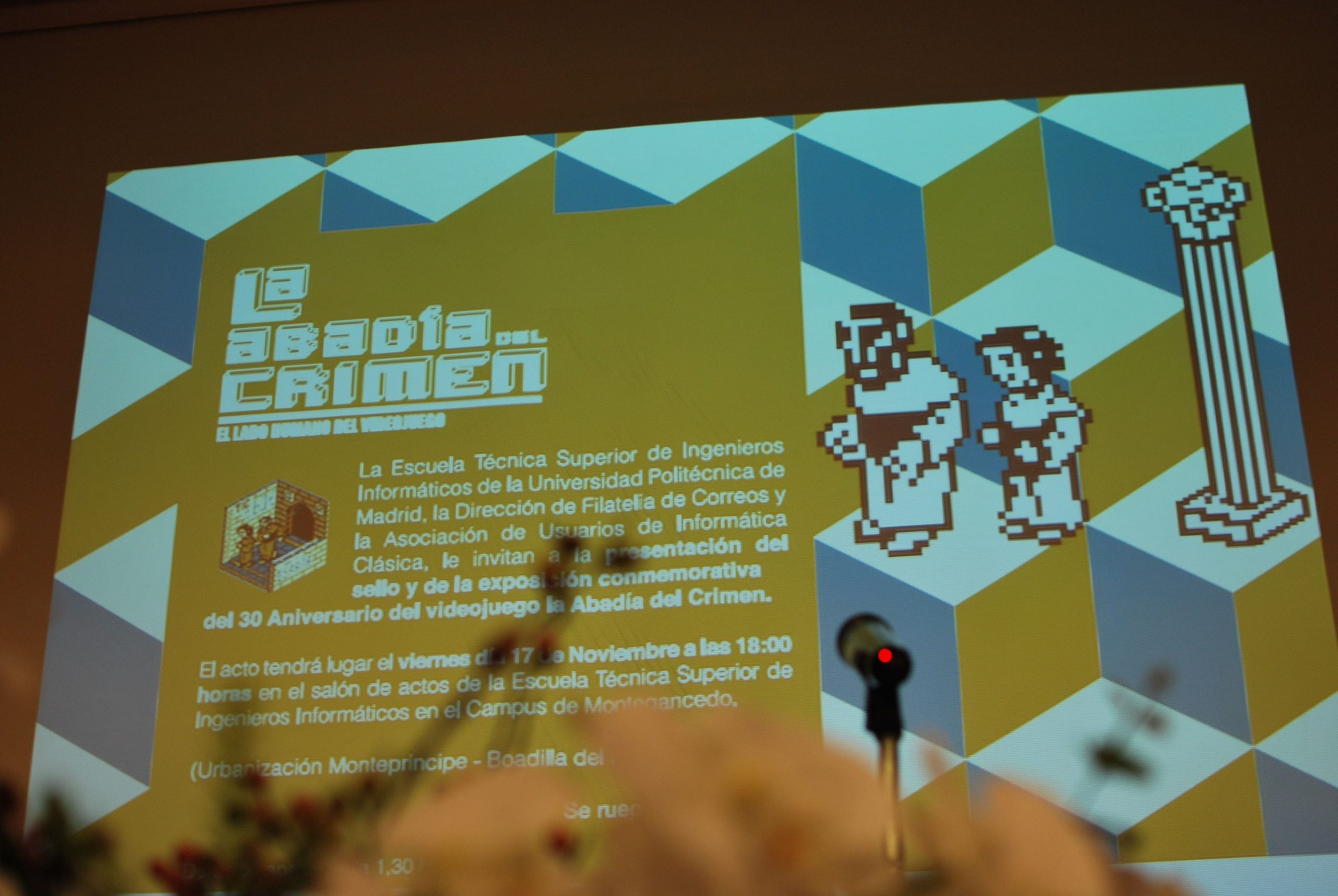
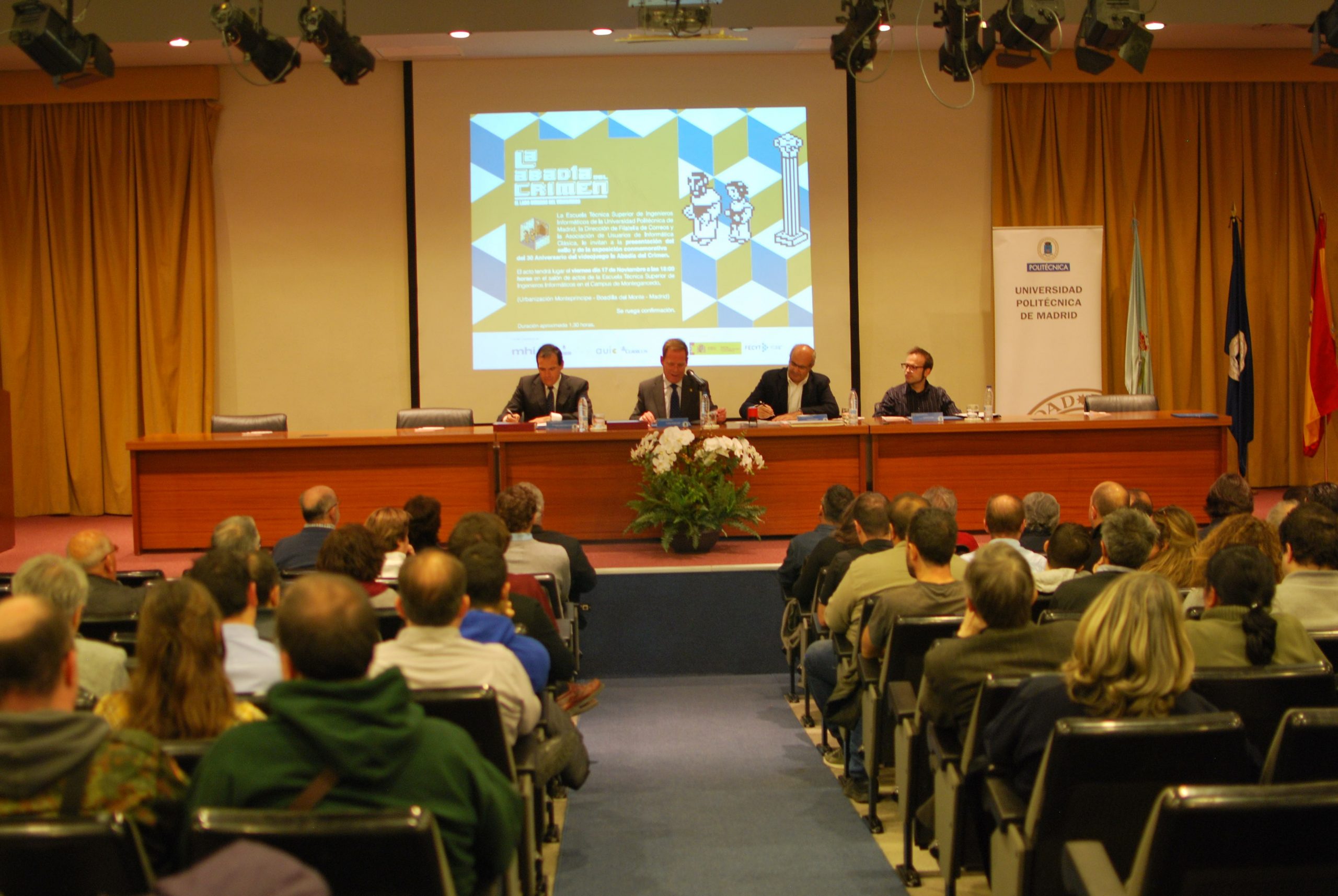
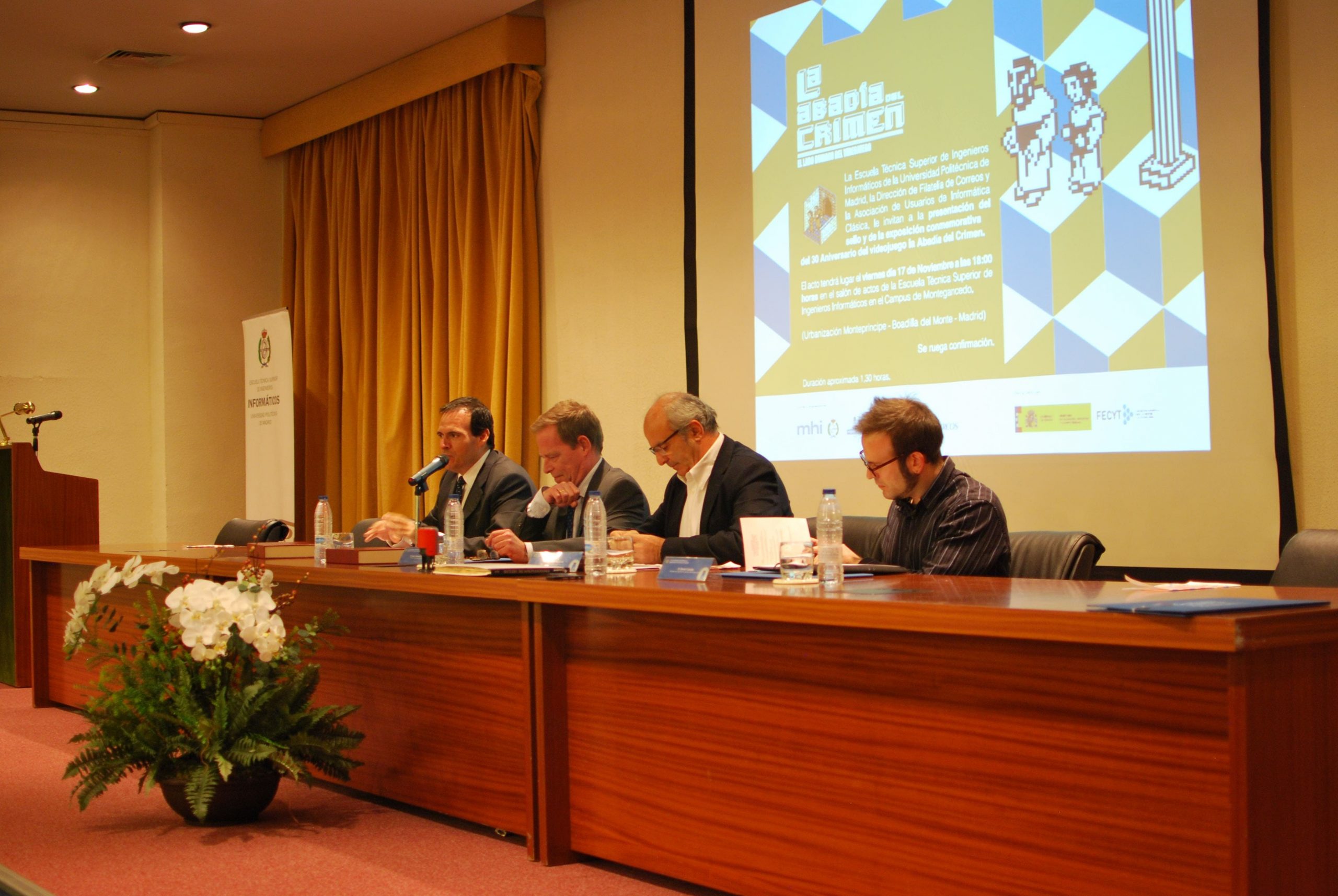
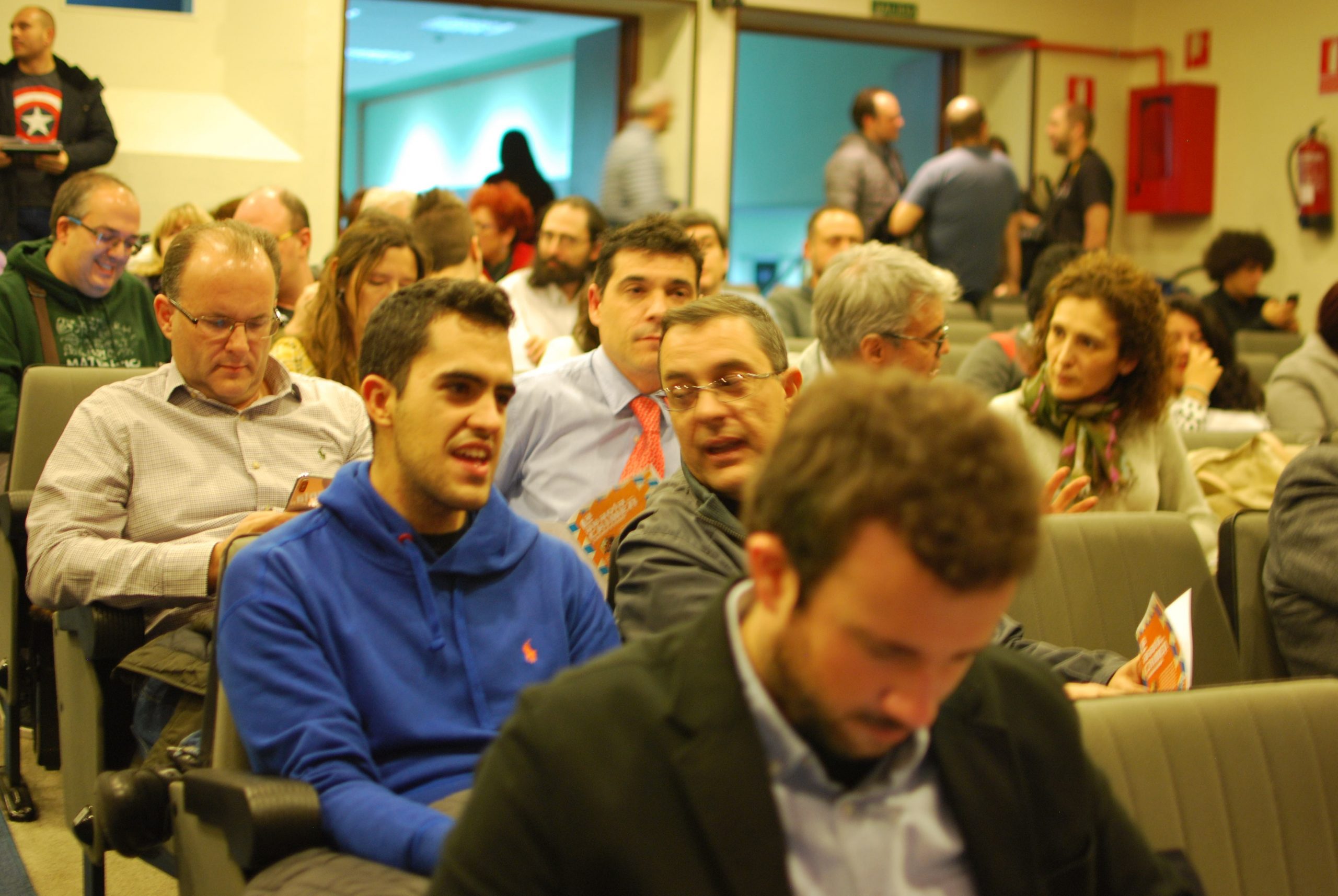
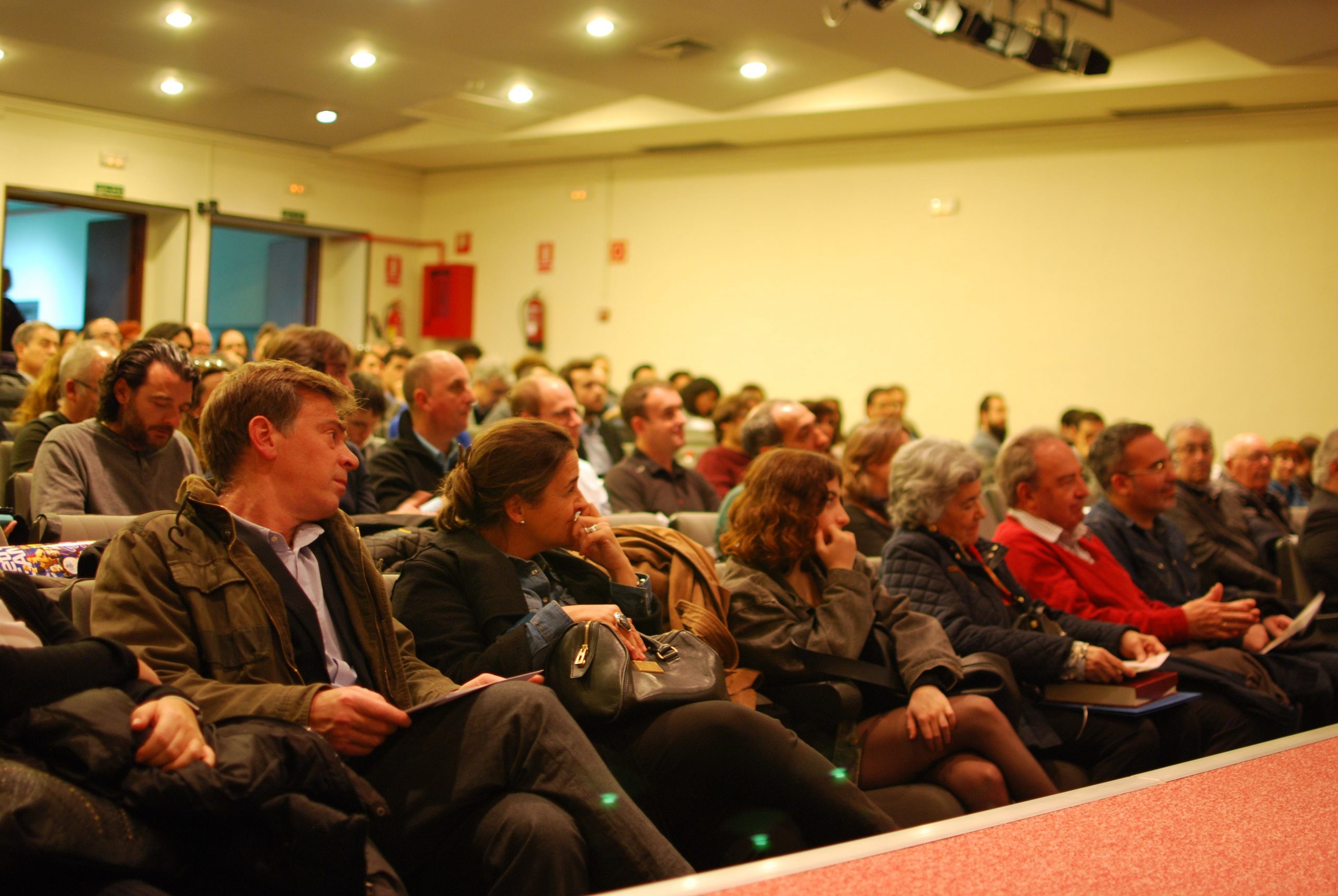
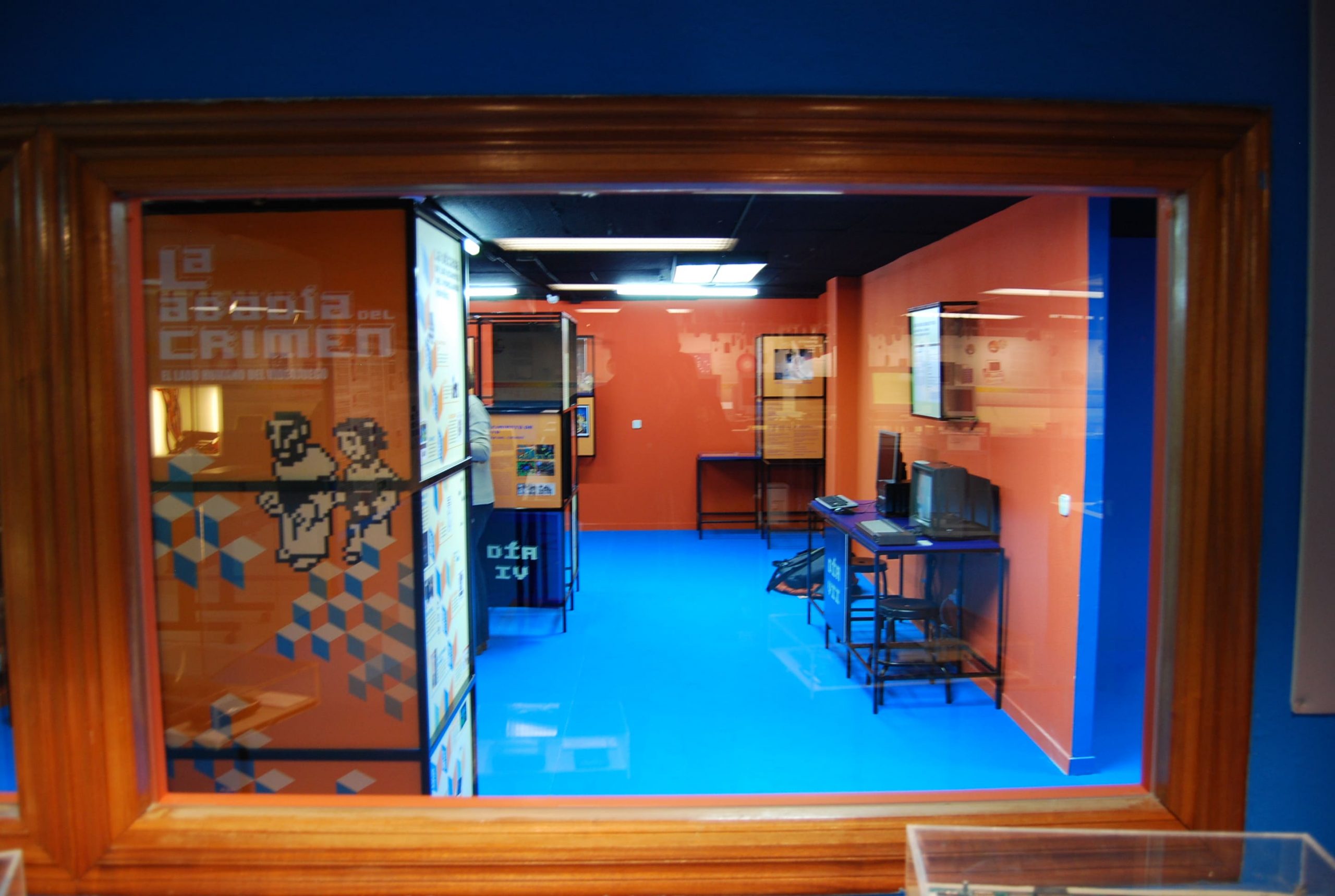

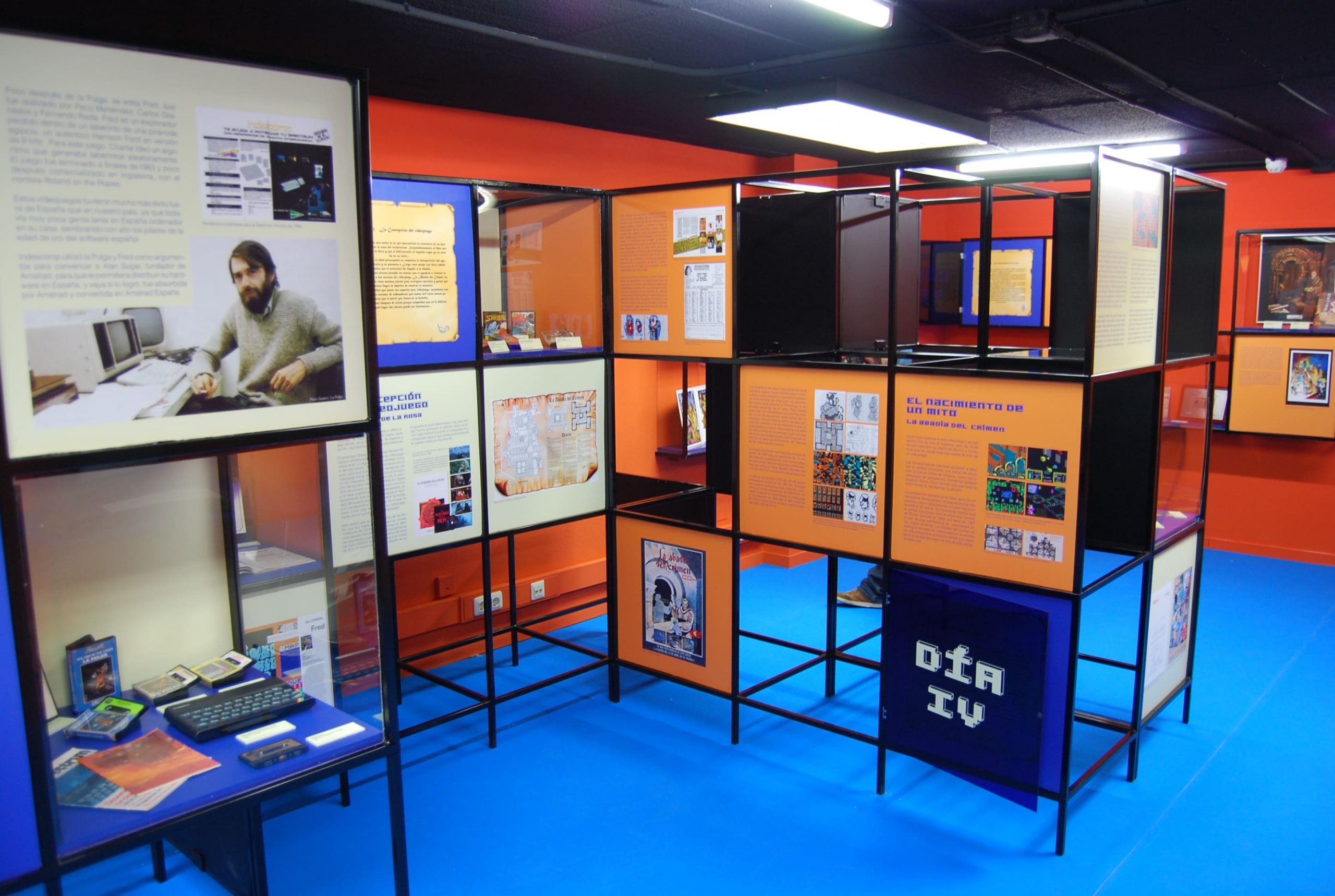
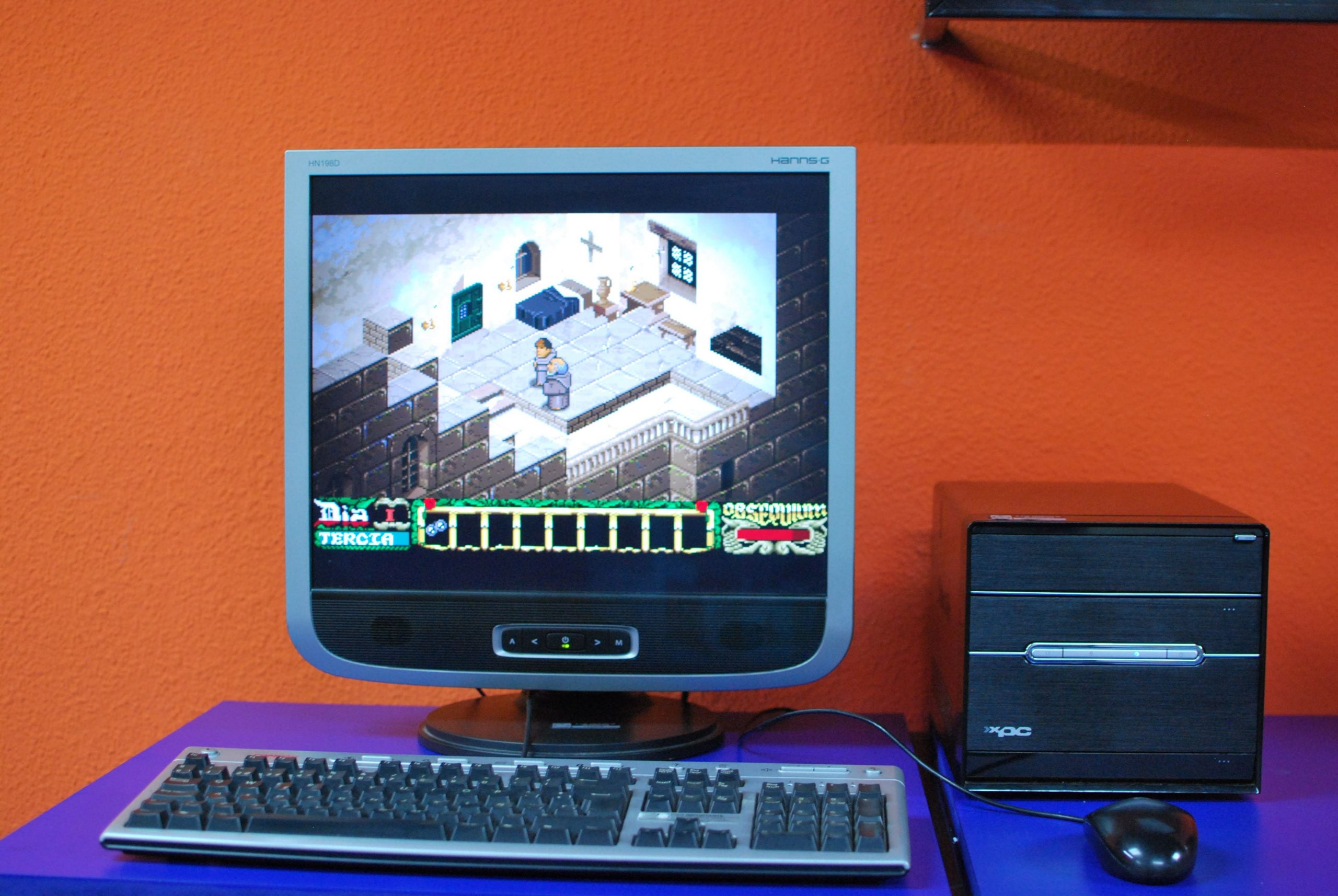
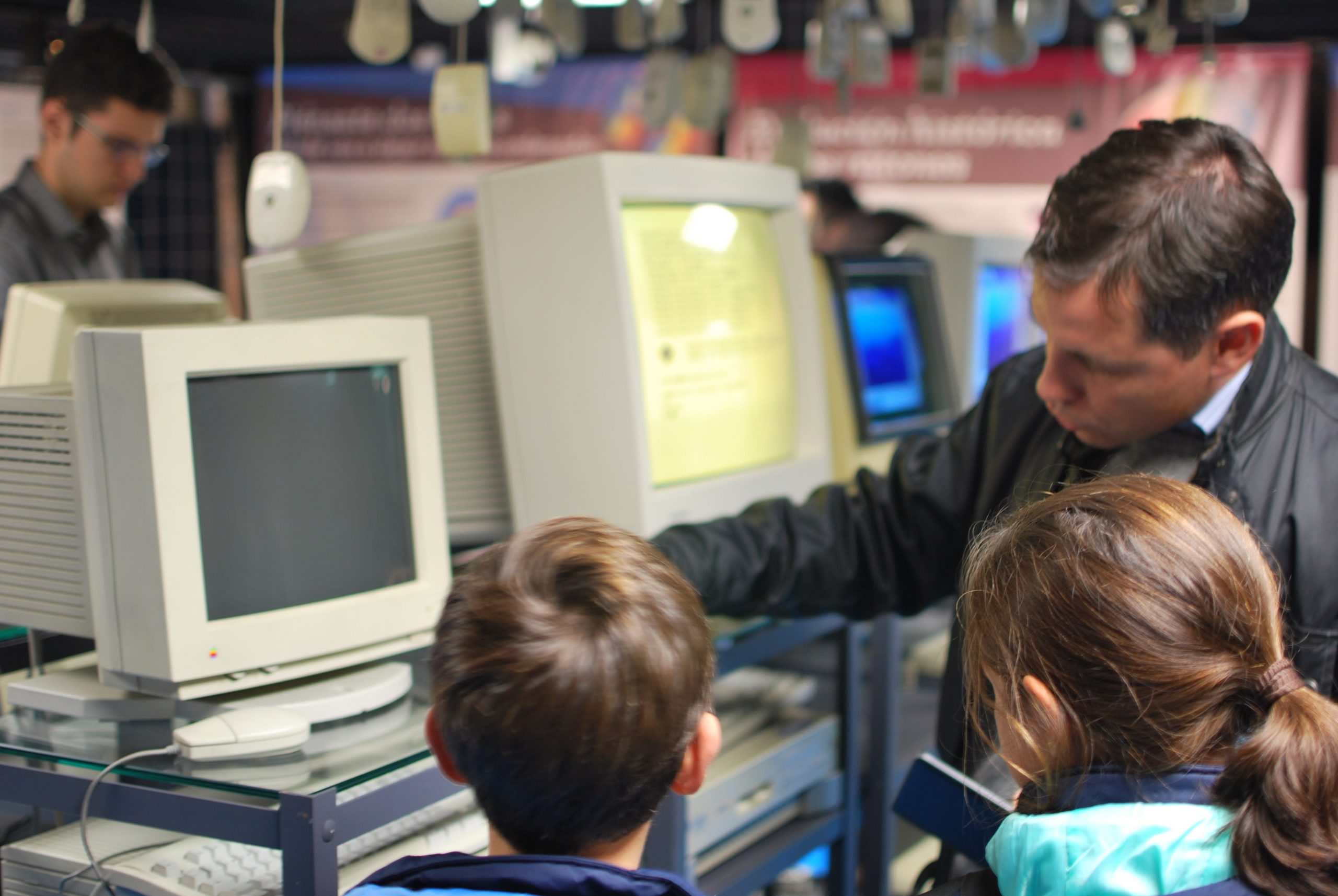
◾ 2018 - Mhi-ETSI Informáticos videogame contest. UPM: Menendez and Delcán
The Historical Museum of Computer Science of the Higher Technical School of Computer Engineering of the Polytechnic University of Madrid, in collaboration with the Association of Classical Computer Users (AUIC), announces a video game contest for students of Compulsory Secondary Education, Baccalaureate, Basic FP and Intermediate Degree, within the Spanish territory. The purpose of the contest is to promote vocations in the field of Information and Communication Technologies.
On March 20, 2019, the video game contest prizes are awarded. The following prizes are awarded:
- Best implementation: Nelson Professional Training Center in Madrid
- Best project: Manuel de Falla de Coslada Secondary School – Madrid
- Finalist Diplomas: Hopscotch Secondary Education Institute
Mirasur School (Pinto – Madrid)
IES Giner de los Rios (Alcobendas, Madrid)
◾ 2019 - Presentation of the book "Queremos su dinero"
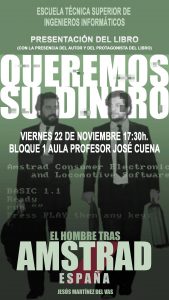
On November 22, 2019, the presentation of the book “Queremos su dinero” was held, which tells the story of Amstrad brand personal computers in Spain. The presentation was attended by the Vice-Rector for Communication of the UPM, Mr. Javier Jiménez Leuve, the Director of the School, Mr. Javier Soriano, the author of the book, Jesús Martínez del Vas, the protagonist of the book, Mr. José Luis Domínguez. The event was organized by the Historical Museum of Informatics and the Association of Users of Classical Informatics.
◾ 2020 - 2021 - Pandemic time
The museum remains closed to the public due to the pandemic. The WEB version of the museum is updated
